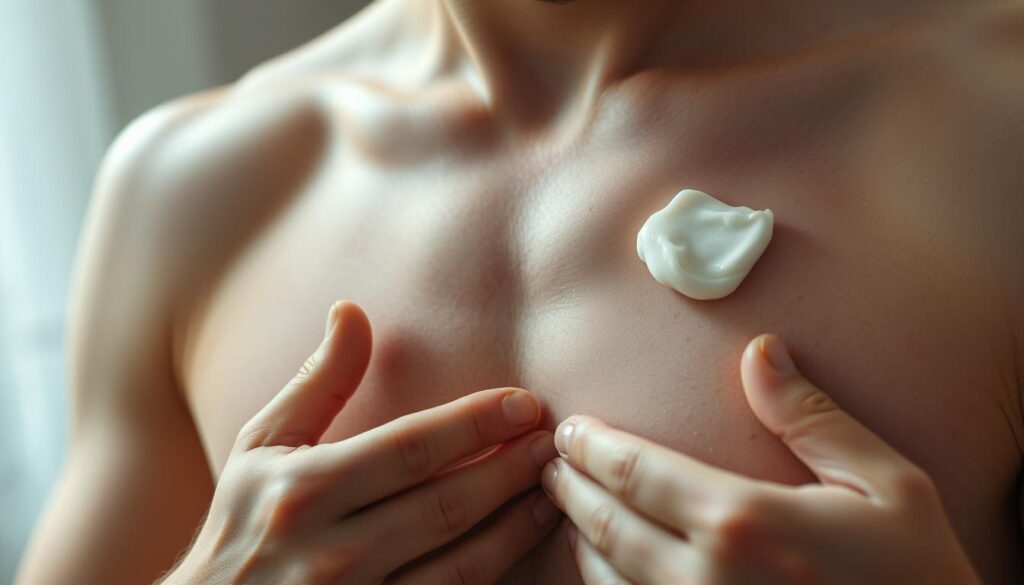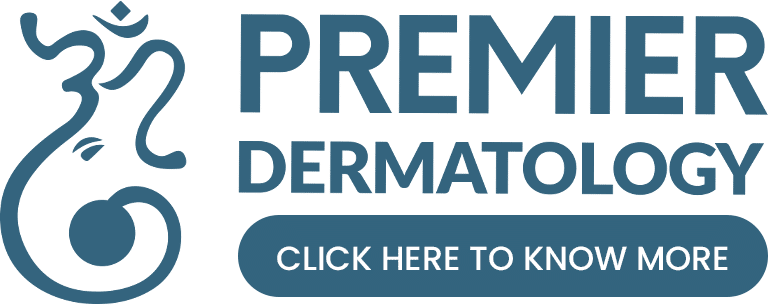For many transgender and nonbinary individuals, top surgery is a crucial step in their gender affirmation journey. The procedure involves masculinization or feminization of the chest to align with one’s gender identity. Understanding what to expect during the recovery process is vital for a smooth and successful healing journey.
As patients prepare for surgery, having a comprehensive guide can significantly reduce anxiety and improve outcomes. This guide covers everything from pre-surgery preparation to long-term recovery milestones, helping individuals navigate their healing journey with confidence.
Key Takeaways
- Understanding the recovery timeline helps set realistic expectations.
- Proper post-operative care significantly improves healing outcomes.
- Pre-surgery preparation is crucial for a smooth recovery experience.
- Both physical healing and emotional adjustment are essential components.
- Common challenges during recovery can be addressed with evidence-based strategies.
Understanding Top Surgery: Types and Procedures
Top surgery is a transformative procedure for transgender and nonbinary individuals seeking to align their physical appearance with their gender identity. It involves surgical procedures that remove or augment breast tissue and reshape the nipples and chest to create a more masculine or feminine appearance.
There are primarily two types of top surgery: chest masculinization and chest feminization. The choice between these procedures depends on the individual’s gender identity and desired chest contour. Understanding the differences between these procedures is crucial for making informed decisions.
| Procedure Type | Description | Key Considerations |
|---|---|---|
| Chest Masculinization | Involves removing breast tissue and reshaping the chest to create a more masculine appearance. | Factors such as existing breast tissue volume and skin elasticity are considered. |
| Chest Feminization | Involves augmenting breast tissue to create a more feminine chest contour. | The procedure may include nipple repositioning or resizing. |
The recovery process varies significantly depending on the type of top surgery performed. It is essential to understand the specifics of the chosen surgery to prepare for the recovery process. Surgeons discuss available options during consultation, helping patients understand the benefits and limitations of each approach.
Preparing for Recovery Before Your Surgery
Preparing for top surgery involves more than just the procedure itself; it requires careful planning for the recovery period. To ensure a comfortable and stress-free recovery, patients should take several steps before undergoing surgery.
Essential Supplies to Gather
Gathering essential supplies is a critical step in preparing for recovery. Patients may need to stock up on items such as compression garments, loose-fitting button-up shirts, extra pillows for elevation, gauze, and any medications prescribed by their surgeon. Having these supplies on hand can significantly improve comfort during the initial healing period.
| Supply | Purpose |
|---|---|
| Compression Garments | Support and comfort during recovery |
| Loose-fitting Shirts | Ease of wear during initial healing |
| Extra Pillows | Elevation and comfort |
Home Setup and Support System
Creating a comfortable recovery space at home is equally important. Patients should ensure their home is clean, clutter-free, and arranged to facilitate easy navigation during the recovery phase. Additionally, arranging for a support system, whether through a friend, family member, or professional caregiver, is crucial for assistance with daily activities during the initial recovery period. Following the surgeon’s instructions and having a care plan in place can help optimize surgery outcomes and overall health.
The Day of Surgery: What to Expect
Understanding what to expect on the day of your top surgery can help alleviate anxiety and ensure a smoother experience. As you prepare for this significant event, it’s essential to be informed about the process to make the most of your time at the surgical facility.
Hospital Experience and Anesthesia
Upon arrival at the hospital or surgical facility, you’ll be guided through the check-in process, which includes verifying your identity, reviewing your medical history, and monitoring your vital signs. The surgeon will mark the area on your chest while you’re in an upright position to ensure optimal placement of incisions. You’ll be administered anesthesia through an IV to help you sleep through the procedure, which typically takes two to three hours.
Immediate Post-Operative Care
After the surgery, you’ll be monitored in a recovery area where your vital signs will be checked, and pain management will begin. Your chest will be bandaged, and a compression garment will be applied to minimize swelling and support the healing tissues. You may experience grogginess, nausea, or discomfort as you wake up from anesthesia, but these symptoms are normal and will be managed by the post-operative care team.
Before discharge, you’ll receive detailed instructions about medication schedules, activity restrictions, and warning signs that require medical attention. Most top surgery procedures are performed on an outpatient basis, allowing you to return home the same day.
First 48 Hours After Top Surgery
The first 48 hours after top surgery are crucial for managing pain and monitoring potential complications. During this period, patients are closely monitored for any signs of issues that may arise after the surgery.
Pain Management Strategies
Effective pain management is critical during the initial 48 hours post-surgery. Patients are typically prescribed pain medications to be taken on a regular schedule to manage discomfort. Additionally, resting in a semi-reclined position with pillows supporting the back and head can help minimize swelling and reduce strain on the chest area.
The use of compression garments is also recommended as it helps reduce swelling and supports the healing tissues. It’s essential to follow the surgeon’s instructions regarding the use of these garments and any other post-operative care instructions.
Monitoring for Complications
Monitoring for potential complications is vital during the first 48 hours. Patients should be aware of signs such as excessive bleeding, unusual pain, fever, shortness of breath, or significant asymmetry in swelling. Any of these symptoms warrant immediate medical attention.
| Complication | Symptoms to Watch For |
|---|---|
| Bleeding | Excessive bleeding or hematoma |
| Infection | Fever, redness, or unusual discharge |
| Respiratory Issues | Shortness of breath or difficulty breathing |
Week One of Recovery from Top Surgery
After undergoing top surgery, the initial week is vital for ensuring proper healing and minimizing complications. During this period, patients need to focus on managing their pain, caring for their surgical sites, and adhering to activity restrictions.
Managing Drains and Dressings
Proper care of drains and dressings is crucial during the first week. Patients should follow their surgeon’s instructions for drain management, which includes emptying drains regularly and monitoring the output. Dressings should be kept clean and dry, with changes made according to the surgical team’s guidance.
Key aspects of drain and dressing care include:
- Emptying drains as directed and recording output
- Monitoring for changes in drain output color or consistency
- Keeping dressings clean and dry
- Following specific instructions for dressing changes
| Care Activity | Frequency | Notes |
|---|---|---|
| Drain Emptying | As directed by surgeon | Record output |
| Dressing Change | As instructed | Keep clean and dry |
Activity Restrictions and Rest
Rest is paramount during the first week of recovery. Patients are advised to avoid strenuous activities, heavy lifting, and bending. Sleeping in a semi-reclined position can help minimize swelling.
Activity restrictions typically include:
- No lifting arms above shoulder height
- Avoiding heavy lifting (more than 5 pounds)
- No bending or twisting
- Continuing to wear a compression garment as directed
Weeks Two and Three: Continued Healing

The second and third weeks post-top surgery mark a crucial period of continued healing and recovery. During this time, patients often experience a significant reduction in swelling and some easing of discomfort, though individual healing processes may vary.
Follow-up Appointments
Follow-up appointments during weeks two and three are critical for assessing the healing of incisions and determining the appropriate time for removing non-dissolvable sutures. As one patient noted, “It’s reassuring to have regular check-ins with my surgeon to ensure everything is healing as expected.” These visits also provide an opportunity for your surgeon to offer updated guidelines on activity levels and address any concerns you may have.
Gradual Return to Light Activities
A gradual return to light activities is typically permitted during weeks two and three, with patients often able to engage in short walks and gentle stretching. It’s essential to continue avoiding heavy lifting and vigorous exercise to prevent complications. As healing progresses, many patients can return to desk work or remote work, though those with physically demanding jobs may need more time to recover.
As the body continues to heal, patients may notice improvements in their overall comfort and mobility. Continuing to follow the surgeon’s advice on activity restrictions remains crucial for optimal healing and minimizing the risk of complications.
One Month Post-Surgery and Beyond
As you approach the one-month mark after top surgery, you’ll likely notice significant improvements in your overall comfort and mobility. By this stage, most of the initial swelling and bruising should have subsided, and your incision sites will have mostly healed. This period is crucial as it signifies a turning point in the healing process, with many patients able to resume most normal daily activities, albeit with some continued restrictions.
Physical Changes and Healing Milestones
At one month post-surgery, physical changes are evident. The swelling has significantly reduced, and initial scar maturation is underway. Patients often report increased comfort in the chest area. Scar appearance begins to change noticeably, and many start implementing scar care routines. Sensation changes in the chest and nipple area continue to evolve as nerve healing progresses.
- Significantly reduced swelling
- Initial scar maturation
- Increased comfort in the chest area
Returning to Exercise and Normal Activities
By the fourth week, you may be able to resume most normal activities, such as driving and returning to work. However, it’s essential to avoid heavy lifting or strenuous exercise for a few more weeks. Exercise restrictions begin to ease around the one-month mark, with walking and light cardio often permitted. It’s crucial to follow your surgery team’s instructions to ensure proper healing and optimal results.
Managing Post-Surgical Discomfort
Effective management of post-surgical discomfort is essential for patients recovering from top surgery, as it allows them to rest properly and engage in necessary healing activities. After the surgery, patients may experience pain, swelling, and discomfort, which can be managed through various methods prescribed by their surgeon.
The body’s response to surgery includes inflammation and pain, which are natural parts of the healing process. However, managing these symptoms is crucial for a comfortable recovery.
Medication Options
Medication plays a crucial role in managing post-surgical pain. Initially, surgeons typically prescribe pain relievers, which are later replaced with over-the-counter options like acetaminophen and ibuprofen as the discomfort decreases. It’s essential for patients to follow the medication schedule carefully to avoid severe pain.
Non-Pharmaceutical Pain Relief Methods
In addition to medication, several non-pharmaceutical methods can help alleviate discomfort. Proper positioning with pillows, gentle cold therapy (if approved by the surgeon), and relaxation techniques can complement medication. Managing swelling through compression garments and elevation also contributes to reduced discomfort.
| Method | Description | Benefits |
|---|---|---|
| Medication | Prescribed pain relievers and over-the-counter options | Effective pain management |
| Proper Positioning | Using pillows for support | Reduces strain on the body |
| Cold Therapy | Gentle application of cold packs | Reduces swelling and pain |
By combining these methods and following the surgeon’s guidance, patients can effectively manage their post-surgical discomfort and support their healing process over time.
Caring for Your Incisions and Scars

Proper care for your incisions and scars is crucial after top surgery to ensure optimal healing and aesthetic results. Your surgeon will provide specific instructions on how to care for your dressings and when to change them. The incision sites may start to look less red and swollen during this time, but it’s normal for scars to continue developing and changing for several months after the surgery.
Proper Wound Care Techniques
During the initial healing phase, keeping incisions clean and dry is paramount. Most surgeons recommend against showering or submerging the chest area until cleared to do so. Once initial dressings are removed, typically at the first post-operative appointment, patients receive specific instructions for cleaning incisions, which may include gentle cleansing with mild soap and water or using prescribed antiseptic solutions.
- Keep incisions clean and dry.
- Follow the surgeon’s instructions for dressing changes.
- Monitor for signs of proper healing, such as clean, well-approximated incisions with minimal redness.
Long-term Scar Management
Long-term scar management typically begins around 3-4 weeks post-surgery when incisions are fully closed. Silicone-based products are considered the gold standard for minimizing scar appearance. Scar massage may be recommended once incisions are fully healed, typically around 6-8 weeks, to help break down scar tissue and improve flexibility of the healing skin.
- Use silicone-based products to minimize scar appearance.
- Consider scar massage once incisions are fully healed.
- Protect scars from sun exposure with SPF 30+ sunscreen for at least 12-18 months.
Potential Complications and When to Seek Help
Understanding the possible complications after top surgery can help patients prepare for a safer recovery. While most patients recover without significant issues, being aware of potential complications and knowing when to seek medical help is essential for safety.
Common Complications
Top surgery, like any other surgical procedure, carries the risk of certain complications. Common complications include hematoma, seroma, infection, wound healing problems, and changes in nipple sensation.
A hematoma occurs when blood gathers in the tissues after surgery, forming a clot. Symptoms include pain, swelling, and discoloration, with an increased risk of infection. Hematomas occur in about 1% to 2% of top surgeries.
A seroma is a collection of clear fluid under the skin, often feeling like a soft, fluid-filled pocket. Small seromas may resolve on their own, but larger ones may require drainage.
| Complication | Description | Symptoms |
|---|---|---|
| Hematoma | Blood clot formation | Pain, swelling, discoloration |
| Seroma | Fluid collection under the skin | Soft, fluid-filled pocket |
| Infection | Bacterial infection in the surgical area | Redness, warmth, swelling, pus, fever |
Warning Signs That Require Medical Attention
It’s crucial for patients to recognize warning signs that require immediate medical attention. These include difficulty breathing, chest pain, significant bleeding, signs of infection, or severe pain not controlled by prescribed medications.
By understanding these potential complications and warning signs, patients can minimize risks and ensure a smoother recovery. It’s essential to follow post-operative instructions carefully and attend all follow-up appointments.
Emotional Aspects of Recovery
Recovery from top surgery involves not just physical healing but also emotional adjustment. The emotional aspects of recovery are equally important as physical healing, with many patients experiencing a range of feelings throughout the recovery process.
Managing Expectations
Managing expectations is crucial, as the immediate post-surgery appearance differs significantly from the final results that emerge over time. Patients may experience a mixture of emotions, including relief, joy, and affirmation, alongside temporary feelings of vulnerability or disappointment.
- Understanding that the initial body changes may not immediately reflect the final outcome.
- Recognizing that emotional fluctuations are a normal part of the recovery process.
Finding Support During Recovery
Finding support during recovery is essential, whether through friends and family, online communities, or mental health professionals experienced in gender-affirming care. Some patients may need additional support to cope with the emotional challenges that arise during this time.
Support systems can help individuals navigate the emotional journey, which often parallels the physical one, with initial intensity gradually giving way to integration and a new normal as both body and mind heal. Patients may need to adjust to their new appearance and the permanence of this significant change.
Frequently Asked Recovery Questions
As patients navigate the recovery process after top surgery, numerous questions arise regarding the healing timeline and post-operative care. Understanding the recovery trajectory is crucial for managing expectations and ensuring a smooth healing process.
Timeline for Specific Activities
Patients often inquire about when they can resume various activities after top surgery. The timeline for specific activities can vary based on individual healing and the surgeon’s instructions.
- Showering: Typically allowed 1-2 weeks post-surgery, depending on the surgeon’s instructions and the type of dressing used.
- Driving: Usually permitted 1-2 weeks after surgery, once narcotic pain medications are discontinued and patients can comfortably perform emergency maneuvers.
- Returning to Work: Desk work may be possible at 2-3 weeks, while physically demanding jobs may require 4-6 weeks or longer.
- Exercise: Gradually resumed, starting with walking immediately after surgery, light cardio at 3-4 weeks, and full exercise including chest workouts at 6-8 weeks.
It’s essential to follow the surgeon’s specific guidance on activity resumption to prevent complications and optimize healing.
Long-term Results and Healing
The long-term results of top surgery, including the final appearance of the chest area and nipples, can take several months to a year or more to fully manifest.
- Nipple Healing: Complete healing of the nipples after grafting procedures can take 2-3 months, with continued improvement in appearance for up to a year.
- Swelling: Most noticeable swelling resolves within 1-2 months, though subtle swelling may persist for 3-6 months.
- Final Results: Become apparent around 6-12 months post-surgery as all swelling resolves and tissues settle.
Understanding these timelines helps patients manage their expectations and appreciate the gradual progress of their healing.
Conclusion
Top surgery recovery is a complex and highly individualized process that requires patience, care, and adherence to post-operative instructions. The journey involves physical healing, emotional adjustment, and a gradual return to normal activities over several months. Following a surgeon’s specific instructions is crucial for achieving optimal results and minimizing complications. As patients recover, they experience significant improvements in body image, confidence, and overall quality of life. With proper care and patience, breast tissue removal surgery leads to results that align with patients’ gender identity and personal goals for chest appearance.


